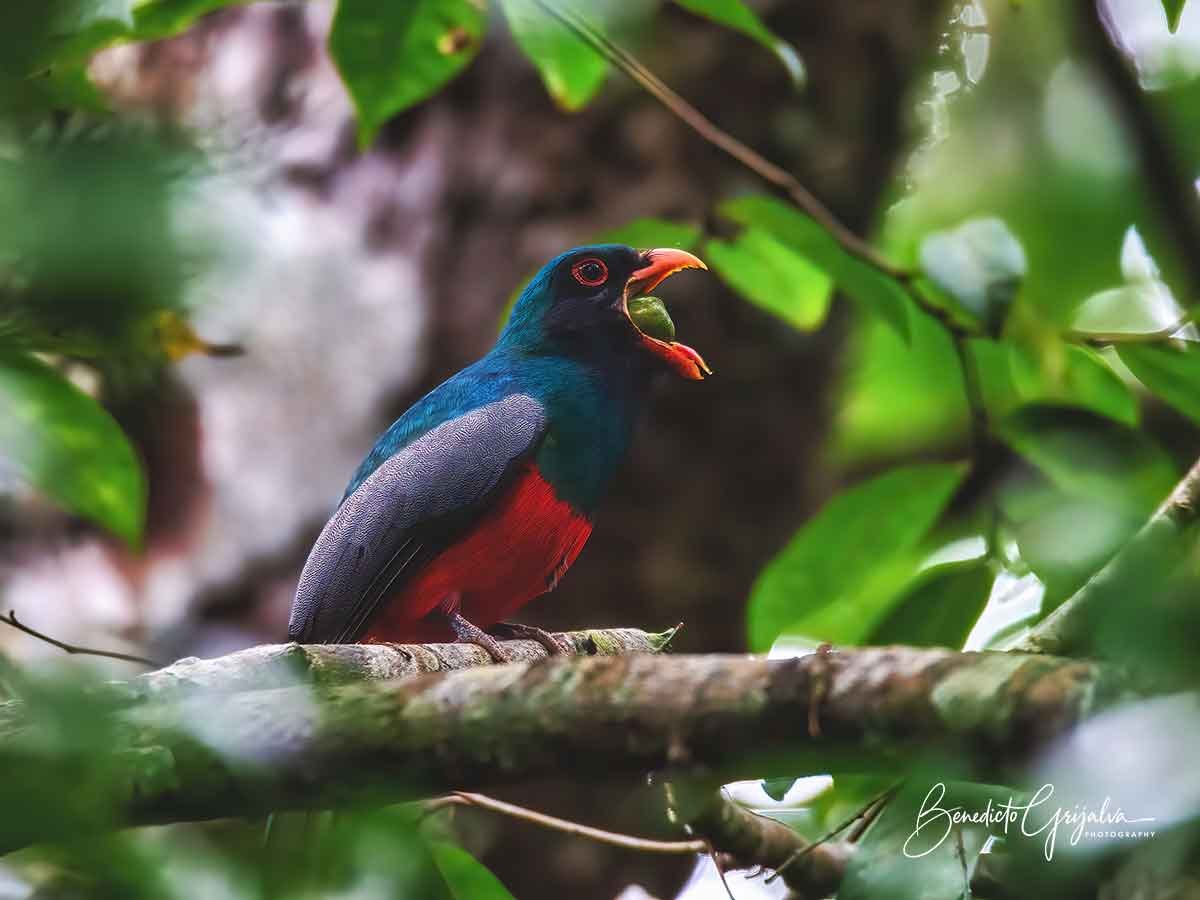Images of the bird of Guatemala: Slaty-tailed Trogon
Slaty-tailed Trogon: The Vibrant Canopy Dweller
Captivating bird enthusiasts with its vivid plumage, the Slaty-tailed Trogon (Trogon Massena) is a classic gem among Central American avifauna. This Trogon breeds an air of mystique and natural allure. Right from the outset, it’s clear that this trogon’s dazzling appearance and habitat preferences make it a sought-after sighting for birdwatchers.
Order: Trogoniformes
Family: Trogonidae
Genus: Trogon
A Glimpse into Its Eclectic Diet
Delving into its feeding habits, the Slaty-tailed Trogon primarily feasts on various fruits and insects. Agilely flitting through the dense, humid forest canopies, it expertly plucks its food mid-air or from the foliage, making it a proficient forager.
Painting the Canopy with Colors
Shifting the focus to its dazzling appearance, the male Slaty-tailed Trogon boasts a striking ensemble. With a green head, back, and throat, complemented by an orange bill and red underparts, it’s a spectacle to behold. Additionally, the slate-colored undertail sets a sharp contrast. In comparison, although more subdued in color, the female carries her charm with a predominantly gray hue accented by a vibrant red belly.
Tracing the Wings Across Regions
Mapping the geographical distribution, the Slaty-tailed Trogon calls the humid lowland rainforests home. These forests, draped in lush greenery, stretch from southern Mexico and snake through Central America, reaching the verdant landscapes of northwestern South America. Such a vast range makes the trogon a quintessential representative of the rich biodiversity of these regions.
To Conclude: A Jewel Amidst the Foliage
In summary, the Slaty-tailed Trogon is an enthralling dweller of the rainforest canopies, leaving bird enthusiasts and nature lovers spellbound with its vibrant colors and agile movements. Furthermore, its diverse diet showcases the trogon’s adaptability and resourcefulness.
Bridging several countries through its habitat, this bird is an invaluable treasure of the regions it graces, and much like its cousin, the Resplendent Quetzal, it continues to captivate those fortunate enough to glimpse its beauty.









